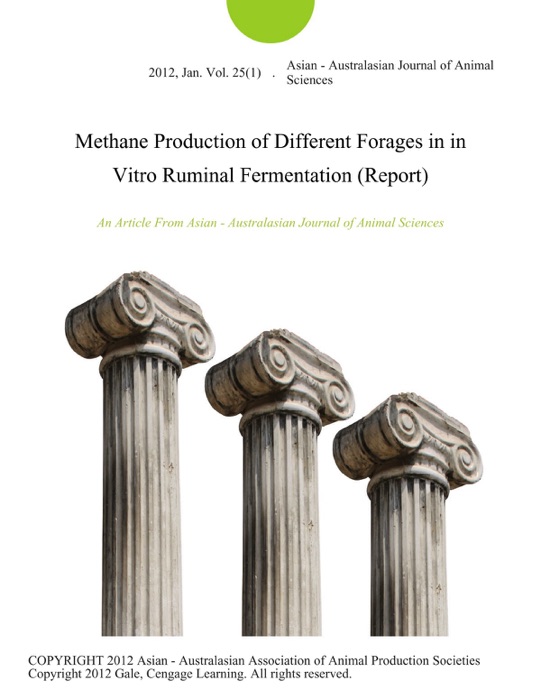DOWNLOAD ~ Methane Production of Different Forages in in Vitro Ruminal Fermentation (Report) * by Asian - Australasian Journal of Animal Sciences ~ Book PDF Kindle ePub Free

eBook details
- Title: Methane Production of Different Forages in in Vitro Ruminal Fermentation (Report)
- Author : Asian - Australasian Journal of Animal Sciences
- Release Date : January 01, 2012
- Genre: Industries & Professions,Books,Business & Personal Finance,
- Pages : * pages
- Size : 273 KB
Description
INTRODUCTION Methane emissions from ruminant livestock have increased five fold over the last century (Johnson et al., 2000) and now constitute ~15% of global C[H.sub.4] emissions (McAllister et al., 1996). In Australia, enteric C[H.sub.4] emissions account for 10.5% of the national greenhouse gas emission (Grainger et al., 2008). Methane production also represents a loss of 2 to 12% of dietary energy in ruminants (Johnson and Johnson, 1995), this is especially the case in Australia with the consumption of high fibre pastures producing ~1 t C[H.sub.4]/t of liveweight gain (Leng, 1993). However, improving forage quality (i.e. increasing dietary starch content) through the supplementation of alternative forages, such as leguminous and non-leguminous shrubs, has the potential to reduce C[H.sub.4] emissions per kg animal product as a result of increased diet digestibility and a shortened duration of feeding (Beauchemin et al., 2009). Dietary strategies such as this, have been successful in manipulating methanogenesis, at least in the short term, through either i) the direct inhibition of methanogens, ii) reducing the production of hydrogen in the rumen or iii) providing alternative sinks for the disposal of hydrogen (Beauchemin et al., 2009). For example, secondary plant compounds (e.g.: condensed tannins and saponins) have been shown to reduce enteric C[H.sub.4] emissions through the direct inhibition of methanogens (Carulla et al., 2005). Similarly, the inclusion of high starch feedstuffs, favour the production of propionate and reduce ruminal pH, thus inhibiting methanogen and protozoal growth (Boadi et al., 2004).